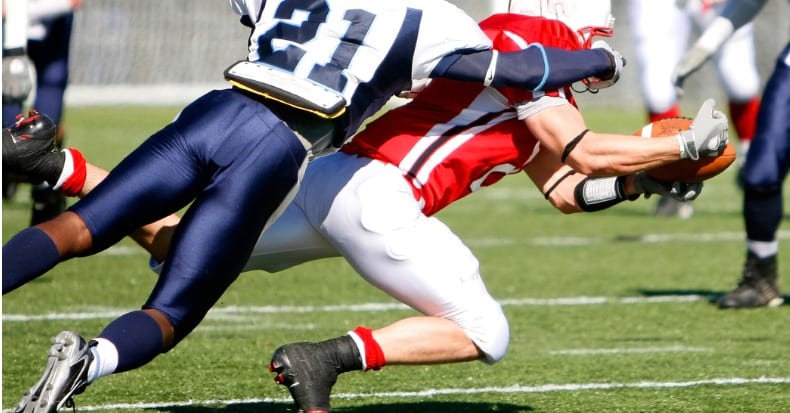Have you ever wondered what actually happens when a player on your favorite sports team has a knee injury? Why is this so common, and why is the knee more vulnerable than the ankle or hip?
One reason is simple anatomy. Unlike the hip, the knee doesn’t have a deep socket, meaning there is less stability and they don't have the added side protection the ankles enjoy. The knee is more like a hinge with little protection when impacts occur from any direction.
In a classic football tackle from the side (or in a “clip”), the runner’s foot is planted with the lower leg rotated inward as the player is cutting a corner when WHAM, a hit occurs. When the tissues in the knee are stretched beyond their limits, they can tear. The order in which the tearing occurs and the amount or degree of the tear is dependent on the exact mechanism of injury or the direction and force of the impact.
The anterior cruciate ligament (ACL) is the innermost structure while the MCL and lateral collateral ligament (LCL) is found on the outside of the joint. If the hit is from the front, the ACL may bear the brunt of the blow while a hit from another direction may first affect the medial collateral ligament (MCL). The meniscus is a C-wedge shaped piece of cartilage that absorbs shock between the joints of the femur and tibia with one on the inside (medial) and outside (lateral meniscus). The meniscus is among the most common of knee injuries, often associated with a twist or torsional stress. This is commonly referred to as a “torn cartilage.”
In one study of 100 consecutive patients with recent ACL tears, there were also 53 MCL, 12 medial, 35 lateral, and 11 bilateral meniscus injuries. The cause included 59/100 injuries due to contact sports, 30/100 in downhill skiing, and 11/100 in other recreational activities, traffic accidents, or at work. It is estimated that there are 100,000 anterior cruciate surgeries in the United States each year!
Doctors of Chiropractic are trained to identify, treat, and rehab knee injuries both pre- and post-surgically. They frequently work with other allied healthcare professionals to optimize outcomes as quickly as possible.


